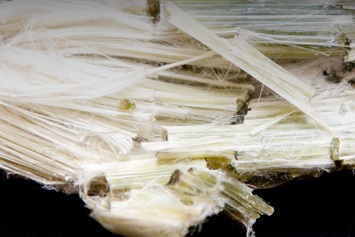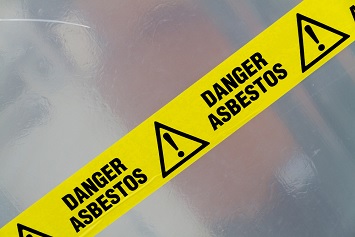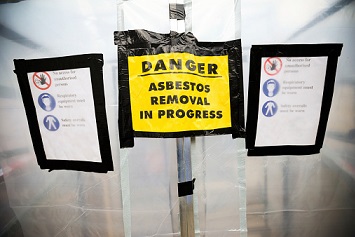The EPA’s release of its Draft Risk Evaluation for Asbestos is a significant step in the Agency’s halting progress over more than 30 years to control the effects of one of the most carcinogenic substances in commercial use in the United States. The risk evaluation is a product of the 2016 amendments to the federal Toxic Substances Control Act (TSCA), which directed the Agency to begin its risk evaluations with 10 chemicals, including asbestos, selected from the EPA’s 2014 Update to the TSCA Work Plan.

The intent of the risk evaluation is to identify whether asbestos presents unreasonable risks or no unreasonable risks under the substance’s conditions of use (COU). (Conditions of use under TSCA means “the circumstances, as determined by the Administrator, under which a chemical substance is intended, known, or reasonably foreseen to be manufactured, processed, distributed in commerce, used or disposed of.”) If the EPA determines that COU of a chemical substance present an unreasonable risk, the Agency must take risk management actions to address the risk; such actions may include restrictions or an outright ban on future COU.
For purposes of prioritization, the EPA may determine that certain uses fall outside the definition of COU. For example, the EPA has the discretion to narrow the scope of the risk evaluation by excluding COU that present low risk. For the asbestos draft risk evaluation, the Agency states that it reviewed 33 COU and found that 6 occupational and 2 consumer COU present unreasonable risks to health. For all COU included in the draft, the EPA said it found no risks to the environment.
Legacy Uses
Excluded from COU in the draft are legacy uses of asbestos, or uses that are no longer occurring but that have left a substantial amount of asbestos in existing buildings and structures.
In its July 2017 rule specifying how it would conduct risk evaluations, the EPA held that TSCA is ambiguous as to whether COU should include the circumstances associated with activities that do not reflect ongoing or prospective manufacturing, processing, or distribution. Given that ambiguity, the EPA decided in the rule to focus its evaluations and any corresponding risk management on uses “for which manufacturing, processing, or distribution in commerce is intended, known to be occurring, or reasonably foreseen to occur (i.e., is prospective or on-going), rather than reaching back to evaluate the risks associated with legacy uses, associated disposal, and legacy disposal.”
Environmental, public health, and worker safety groups challenged the entire rule in the U.S. Court of Appeals for the 9th Circuit. In a unanimous opinion filed in November 2019, a panel denied most of the plaintiffs’ claims. However, the panel took issue with the EPA’s categorical exclusion of legacy activities from the definition of COU.
“TSCA’s definition of ‘conditions of use’ clearly includes uses and future disposals of chemicals even if those chemicals were only historically manufactured for those uses,” the panel stated. “EPA’s exclusion of legacy uses and associated disposals from the definition of ‘conditions of use’ is therefore unlawful.”
But in the asbestos risk evaluation, the EPA notes that it is still reviewing the 9th Circuit’s opinion. “[T]his draft risk evaluation does not reflect consideration of any legacy uses and associated disposal for chrysotile asbestos or other asbestos fiber types as a result of that decision,” the Agency states. “EPA intends to consider legacy uses and associated disposal in a supplemental scope document and supplemental risk evaluation.”
2019 SNUR
The EPA has historically recognized that asbestos contributes to mesothelioma and lung cancer, particularly in workers exposed to the substance. In 1989, the Agency issued its TSCA Asbestos Ban and Phaseout Rule, which banned the manufacture, importation, processing, and distribution in commerce of most uses of asbestos. In 1991, this regulation was largely overturned by the U.S. Court of Appeals for the 5th Circuit. As a result, only five asbestos products and all new uses of asbestos remained banned. The EPA’s failure to justify the 1989 rule in court severely limited subsequent attempts at similar regulatory efforts to ban toxic chemicals in commerce; that failure was a major impetus behind the 2016 TSCA amendments.
Following the court’s vacatur of the 1989 rule, the EPA’s major regulatory action regarding asbestos occurred in April 2019 when the Agency finalized an Asbestos Significant New Use Rule (SNUR) under TSCA Section 5. The rule prohibits manufacture (including import) or processing of discontinued uses of asbestos from restarting without the EPA having an opportunity to evaluate each intended use for risks to health and the environment and to take regulatory action, which may include a ban. Absent the SNUR, any dormant asbestos uses could begin in the United States at any time without EPA notice or regulation.

Unique Substance
The EPA notes that in terms of evaluating exposure information, asbestos is unique among the first 10 risk-evaluation chemicals because it is a fiber and has a long history of different exposure-assessment methodologies. For mesothelioma, the assessment is also unique with respect to the impact of the timing of exposure relative to the cancer outcome, as the time from first exposure plays a dominant role in modeling risk. The most relevant exposures for understanding mesothelioma risk are those that occurred decades before the onset of mesothelioma and subsequent mesothelioma mortality.
Asbestos has not been mined or otherwise produced in the United States since 2002. Although there are several types of asbestos, the only form known to be imported, processed, or distributed for use in the United States is raw chrysotile, which is currently imported exclusively for use by the chlor-alkali industry. Imported amounts range from 300 to 800 metric tons a year. The EPA has also identified the importation of asbestos-containing products—specifically, sheet gaskets, brake blocks, aftermarket automotive brakes/linings, other vehicle friction products, and other gaskets. The import volumes of those products are not fully known. The Agency evaluated the following categories of COU of chrysotile asbestos: manufacturing; processing; distribution in commerce; occupational and consumer uses; and disposal of diaphragms in the chlor-alkali industry, sheet gaskets in chemical production facilities, oil field brake blocks, aftermarket automotive brakes/linings, other vehicle friction products, and other gaskets.
Risks and Nonrisks
To estimate health hazards (cancer only) for COU, the Agency evaluated exposures (inhalation only) to asbestos in occupational and consumer settings. In occupational settings, the EPA evaluated inhalation exposures to workers and occupational nonusers (ONUs). Inhalation monitoring data submitted by industry and literature sources were used to estimate potential inhalation exposures. In consumer settings, the EPA evaluated inhalation exposures to both consumers (do-it-yourselfer mechanics) and bystanders and used estimated inhalation exposures from reasonably available literature sources that met data evaluation criteria to estimate potential exposures using a range of user durations. The Agency reached the following preliminary determinations:
- No asbestos COU present an unreasonable risk to environmental receptors.
- The following asbestos COU present an unreasonable risk of injury to the health of workers (including, in some cases, ONUs) or to consumers (including, in some cases, bystanders):
- Processing and industrial use of asbestos diaphragms in the chlor-alkali industry;
- Processing and industrial use of asbestos-containing sheet gaskets in chemical production;
- Industrial use and disposal of asbestos-containing brake blocks in the oil industry;
- Commercial use and disposal of aftermarket automotive asbestos-containing brakes/linings;
- Commercial use and disposal of other vehicle friction products; and
- Commercial use and disposal of other asbestos-containing gaskets.
- The following asbestos COU did not present an unreasonable risk to health:
- Import of asbestos and asbestos-containing products;
- Distribution of asbestos-containing products;
- Disposal of asbestos-containing sheet gaskets processed and/or used in chemical production; and
- Import, use, distribution, and disposal of asbestos-containing brakes for the specialized and large National Aeronautics and Space Administration (NASA) transport plane (Supper Guppy).
Chrysotile Asbestos and Chlorine Production
Since the initiation of the asbestos risk evaluation in 2016, industry appears to be most concerned about a possible ban on the use of asbestos in the chlor-alkali process, which produces chlorine and sodium hydroxide (lye/caustic soda). In a May 2019 hearing of the House Subcommittee on Environment and Climate Change, Michael Wells, a vice president with the American Chemistry Council (ACC), testified that the chemical industry has provided the EPA with information on the transportation, use, and disposal of chrysotile asbestos in the chlor-alkali sector, as well as exposure information.
“ACC member companies’ use of asbestos in the production of chlorine is highly regulated and controlled to prevent exposures to humans and the environment,” testified Wells. “The requirements include a specific [Clean Air Act] National Emissions Standard for Hazardous Air Pollutants rule. One-third of total U.S. production of chlorine and sodium hydroxide relies upon closed-system chrysotile asbestos diaphragm cells that separate the chlorine from the sodium hydroxide while remaining contained in the cell. Human exposures are prevented by the rigorous use of personal protective equipment, as well as appropriate engineering controls, maintenance, and rigorous training. Federal regulations mandate specific requirements for the disposal of spent asbestos diaphragms.
“Chlorine is essential to ensuring access to safe drinking water for millions of American families, lifesaving healthcare and pharmaceutical products, energy resources like solar panels and wind turbines, and much more. A blanket ban that includes the chlor-alkali industry’s use of asbestos would have a significant impact on the supply of chlorine, which could in turn jeopardize public health and increase prices for a wide range of vital consumer goods.
“To be clear, ACC believes that EPA’s ongoing risk evaluation properly includes the use of asbestos in chlorine production. In our view, however, that use is and will continue to be appropriately controlled to ensure that it does not pose an unreasonable risk to human health or the environment.”
Ban Asbestos Bill
At the hearing, Wells expressed the ACC’s opposition to one of the topics, the Alan Reinstein Ban Asbestos Now Act (H.R. 1603), which would prohibit the manufacturing, processing, and distribution of asbestos or any mixture or article containing asbestos. Exceptions in cases of protecting national security would be allowed.
“ACC opposes H.R. 1603 because it would set an unfortunate precedent for legislating risk management actions on substances subject to TSCA,” said Wells.
Others at the hearing saw no adequate alternative to the blanket ban on asbestos included in the legislation. Furthermore, Rebecca L. Reindel, who testified on behalf of the American Federation of Labor and Congress of Industrial Organizations (AFL/CIO), downplayed the EPA’s assertion that the asbestos SNUR was a powerful regulatory tool.
“Through this SNUR mechanism, EPA would be notified when raw asbestos and asbestos-containing articles manufactured or processed in other countries are imported into the U.S., or when asbestos-containing materials are produced here in the U.S. and that EPA could allow these uses,” said Reindel. “The very issuance of this rule is a declaration by the Agency that some uses of asbestos are safe, as well as an indication the Agency refuses to use its authority to ban this dangerous substance.”
Following issuance of the draft risk evaluation, Rep. Frank Pallone (D-NJ), who chairs the House Energy and Commerce Committee, called the evaluation “unlawful.”
“Publishing this long-awaited proposal for public comment now—in the midst of a declared national emergency—shows just how out of touch the Trump administration is,” said Pallone in a statement.
Pallone also reminded the EPA that the 9th Circuit’s ruling on legacy uses could not be ignored.
“The Trump EPA needs to remember that federal court rulings are not merely a suggestion and stop excluding the risks posed by legacy uses to manipulate the science and exonerate asbestos,” said Pallone.
The EPA has announced that it will accept comments on the draft evaluation until June 2, 2020. The Agency says it is also submitting the draft risk evaluation and associated supporting documents to the TSCA Science Advisory Committee on Chemicals for peer review.
“All conclusions, findings, and determinations in this document are preliminary and subject to comment,” the EPA states in the draft. “The final risk evaluation may change in response to public comments received on the draft risk evaluation and/or in response to peer review, which itself may be informed by public comments.”

